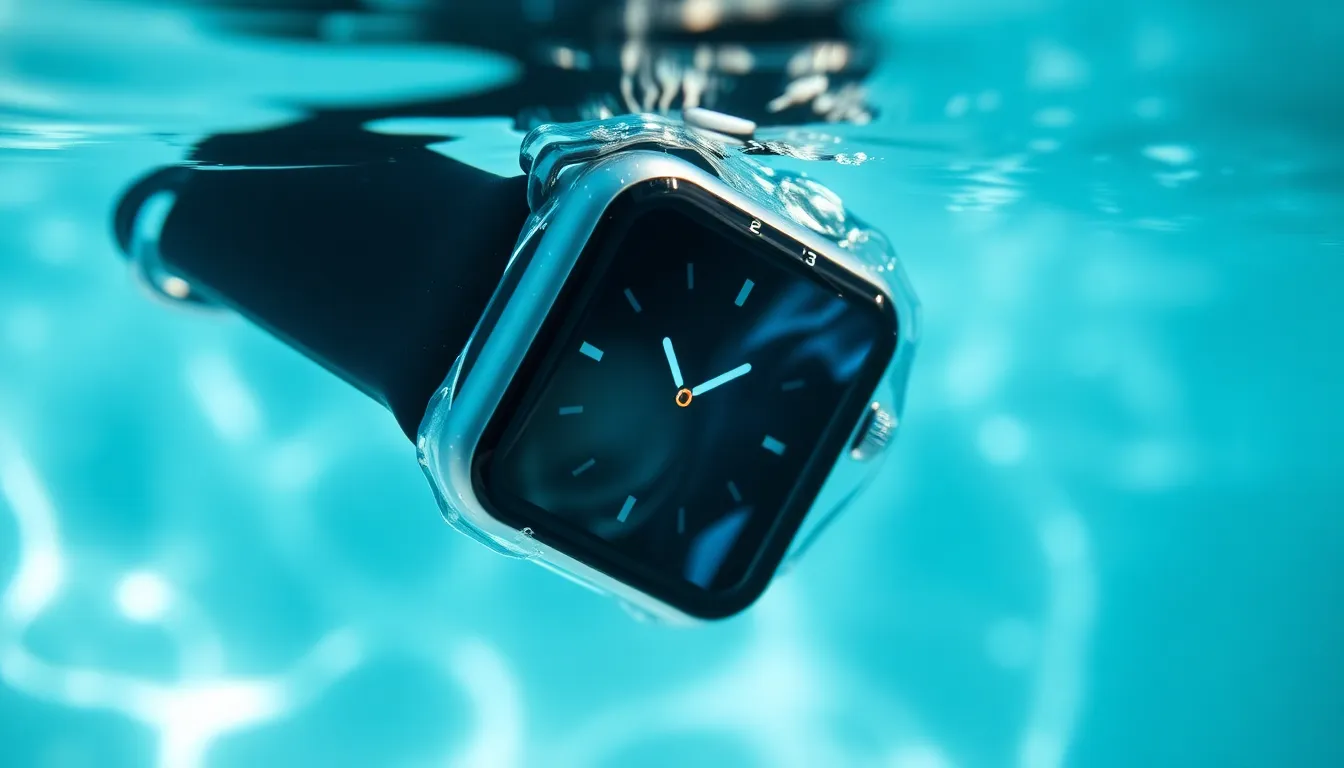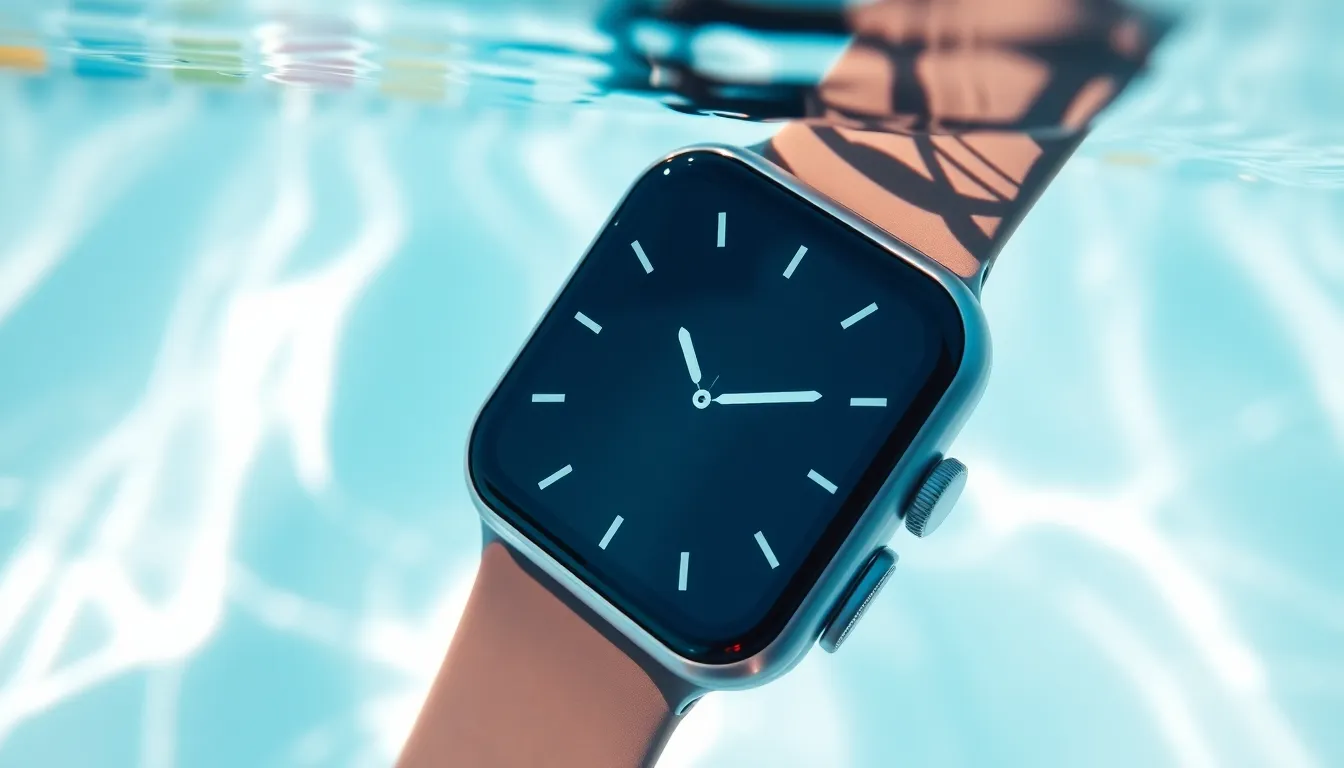When it comes to tech gadgets, the Apple Watch is like that overachieving friend who can do it all—track your workouts, manage your notifications, and even tell you the weather. But what about when it gets a little splashy? With so many folks diving into the pool or getting caught in the rain, it raises a burning question: is the iPhone Watch really waterproof?
Picture this: you’re at the beach, soaking up the sun, and suddenly your watch takes a dip. Should you panic, or can you just let it float? Understanding the water resistance of the Apple Watch is crucial for anyone who wants to enjoy their device without the fear of a soggy disaster. Dive in as we explore the depths of this topic and find out if your trusty timepiece can swim with the fishes—or if it’s best left on dry land.
Table of Contents
ToggleOverview of the Apple Watch
Apple Watch offers a range of features designed for fitness and connectivity. Users can track workout sessions, monitor heart rates, and receive notifications. Water resistance varies between different Apple Watch models, so understanding this can influence user experience.
Series 1 and the original Apple Watch have a water resistance rating of IPX7, which allows for splashes and brief immersion in water, but swimming is not recommended. Series 2 and later models, including SE and Series 3, boast a water resistance rating of 50 meters under ISO standard 22810:2010. This rating enables wearers to enjoy swimming and other water activities.
Diving or engaging in high-velocity water sports isn’t advisable, even for these later models, as their resilience reduces under extreme water pressure. It’s essential to acknowledge that water resistance isn’t permanent. Factors like wear and environmental conditions can affect performance over time.
Apple provides guidelines for their devices, emphasizing specific measures for exposure to water. For instance, rinsing the watch in fresh water after swimming can help remove chlorine and saltwater residue. Engaging with the Apple Watch in wet conditions while following these guidelines supports device longevity.
Exploring the Apple Watch also reveals features like Water Lock, which prevents accidental taps during water activities. This function enhances usability when submerged. Users should regularly check for any signs of damage, such as cracks in the casing or screen, which could compromise water resistance.
Water Resistance Ratings

Understanding the water resistance ratings helps users determine the best usage scenarios for their Apple Watch. Each model comes with a specific rating indicating its suitability for different water exposure levels.
Understanding IP Ratings
The Ingress Protection (IP) rating defines how well a device resists dust and moisture. For instance, an IPX7 rating indicates the Apple Watch can withstand immersion in water up to one meter for 30 minutes. Conversely, this rating does not support prolonged or deep water exposure, making it essential to check compatibility before engaging in water activities.
Apple Watch Series Ratings
Apple Watch models vary significantly in their water resistance capabilities. The original Apple Watch and Series 1 carry an IPX7 rating, suitable mostly for splash exposure. Series 2 and later models, including the Apple Watch SE and Series 3, offer 50-meter water resistance, allowing for swimming and other water sports. Users should note that activities like scuba diving or high-velocity sports can exceed these limits, potentially damaging the watch. Regular checks for wear and tear help maintain water resistance integrity over time.
Testing Water Resistance
Understanding water resistance is crucial before using an Apple Watch in wet conditions. Different situations can affect how well the watch performs when exposed to water.
Real-World Scenarios
Many users encounter various scenarios involving water. Swimming pools often become a common setting for testing water resistance. For instance, Series 2 and later models perform well submerged in water, rated to withstand depths of up to 50 meters. Rain poses a different challenge; while the watch can handle splashes, it’s best not to assume it can survive heavy downpours without checks. Users also explore activities like surfing, but high-velocity sports can risk damaging the watch, despite its robust design. In chatting with fellow users, they note that everyday exposure, like washing hands or showering, generally remains safe, provided they ensure regular maintenance.
Laboratory Testing Procedures
Laboratory tests determine an Apple Watch’s water resistance capabilities. Engineers utilize standardized methods to evaluate how the watch withstands water exposure. They often immerse the device in water at measured depths and durations. Tests conform to established Ingress Protection (IP) standards, providing insights into performance ratings. An IPX7 rating, for example, confirms the device can survive immersion in water for up to 30 minutes at one meter deep. Each model undergoes rigorous testing to validate its specified water resistance, ensuring reliability for consumers. Manufacturers continually monitor for potential wear and tear that could impact the watch’s performance over time.
User Experiences and Reviews
Users share diverse experiences regarding the Apple Watch’s water resistance. Many appreciate its durability during routine activities, noting its effectiveness when used in light rain or while showering.
Customer Feedback
Customers express satisfaction with their Apple Watches, particularly models Series 2 and later. They report success using their devices during swimming sessions, enjoying features like swim tracking. Users frequently mention confidence in wearing the watch during workouts, citing peace of mind even when submerged in water. Positive reviews highlight how the water resistance enhances their overall experience with fitness tracking. However, a few cautiously recommend checking for any signs of wear before engaging in water-related activities.
Common Issues Reported
Some users experience minor issues related to water resistance. They note instances of condensation forming under the display after swimming, raising concerns about potential damage. Others report that despite adhering to guidelines, their watches occasionally show reduced functionality. A number of complaints mention difficulties with the speaker quality following exposure to water. Users emphasize the need for ongoing maintenance to ensure optimal performance over time.
The Apple Watch offers impressive water resistance that varies by model. Users can confidently wear Series 2 and later versions during swimming and water activities. However it’s crucial to remember that water resistance isn’t a permanent feature and can diminish over time. Regular maintenance and awareness of the watch’s condition are essential for optimal performance.
While the device excels in everyday scenarios like light rain and showers, caution is advised against heavy exposure. By following Apple’s guidelines and understanding the limits of water resistance, users can fully enjoy the capabilities of their Apple Watch while keeping it safe from potential water damage.




